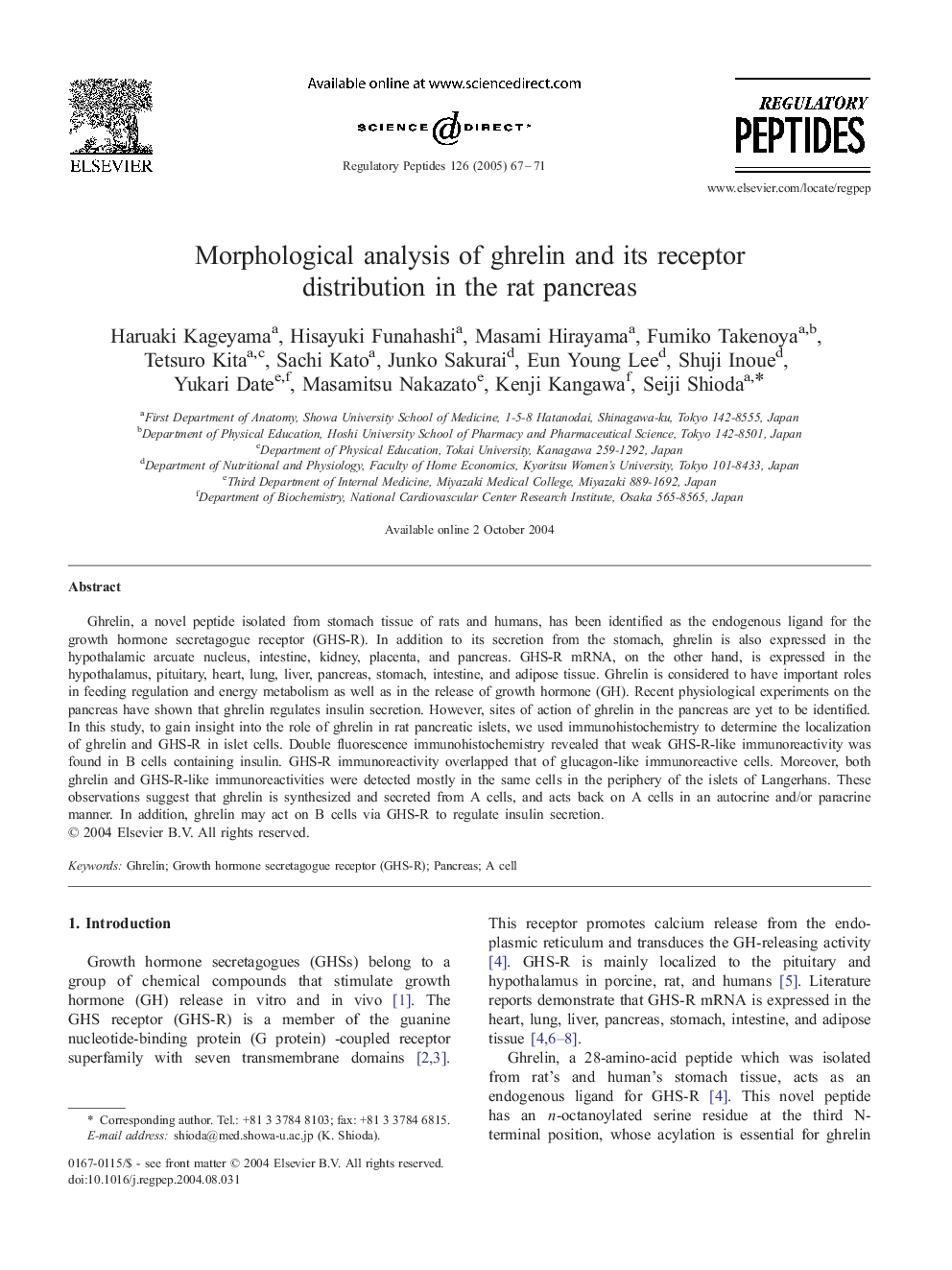| Article ID | Journal | Published Year | Pages | File Type |
|---|---|---|---|---|
| 9894480 | Regulatory Peptides | 2005 | 5 Pages |
Abstract
Ghrelin, a novel peptide isolated from stomach tissue of rats and humans, has been identified as the endogenous ligand for the growth hormone secretagogue receptor (GHS-R). In addition to its secretion from the stomach, ghrelin is also expressed in the hypothalamic arcuate nucleus, intestine, kidney, placenta, and pancreas. GHS-R mRNA, on the other hand, is expressed in the hypothalamus, pituitary, heart, lung, liver, pancreas, stomach, intestine, and adipose tissue. Ghrelin is considered to have important roles in feeding regulation and energy metabolism as well as in the release of growth hormone (GH). Recent physiological experiments on the pancreas have shown that ghrelin regulates insulin secretion. However, sites of action of ghrelin in the pancreas are yet to be identified. In this study, to gain insight into the role of ghrelin in rat pancreatic islets, we used immunohistochemistry to determine the localization of ghrelin and GHS-R in islet cells. Double fluorescence immunohistochemistry revealed that weak GHS-R-like immunoreactivity was found in B cells containing insulin. GHS-R immunoreactivity overlapped that of glucagon-like immunoreactive cells. Moreover, both ghrelin and GHS-R-like immunoreactivities were detected mostly in the same cells in the periphery of the islets of Langerhans. These observations suggest that ghrelin is synthesized and secreted from A cells, and acts back on A cells in an autocrine and/or paracrine manner. In addition, ghrelin may act on B cells via GHS-R to regulate insulin secretion.
Related Topics
Life Sciences
Biochemistry, Genetics and Molecular Biology
Biochemistry
Authors
Haruaki Kageyama, Hisayuki Funahashi, Masami Hirayama, Fumiko Takenoya, Tetsuro Kita, Sachi Kato, Junko Sakurai, Eun Young Lee, Shuji Inoue, Yukari Date, Masamitsu Nakazato, Kenji Kangawa, Seiji Shioda,
